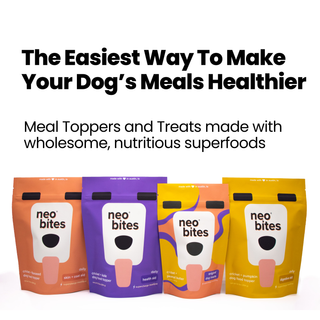Understanding the Need for Change
Switching up your dog's diet can be necessary for various reasons: dietary intolerances, age-related nutritional needs, or simply for a healthy change. Before making any drastic alterations, it’s important to understand your dog’s current dietary requirements and the potential benefits or risks associated with a new diet.
Consulting with a Veterinarian
Before making changes to your dog’s diet, a consultation with a veterinarian is crucial. The vet can provide insights into the specific nutritional needs of your pet based on factors like breed, age, activity level, and health status. They can also help identify any potential allergies or sensitivities and recommend appropriate diets or supplements that will support your dog's well-being.
Researching New Diet Options
Dietary options for dogs range from dry kibble and wet food to raw diets and home-cooked meals. Each type of food comes with its own set of advantages and considerations. Research each option thoroughly, taking into account the quality of ingredients, the balance of nutrients, and sourcing of the diet that you are considering for your dog.
Understanding Food Labels
When researching new foods, it's important to understand how to read pet food labels. Look for diets that have high-quality protein sources as one of the first ingredients. Ensure that the diet meets AAFCO nutritional standards and beware of foods with excessive fillers, additives, or artificial ingredients that could harm your pet's health.
Introducing the New Diet Gradually
Once you've chosen a new diet, introduce it to your dog's feeding routine gradually. A sudden change can cause digestive upset, so it's recommended to mix the new food with the old, gradually increasing the amount of new food over the course of 7-10 days. This transition period is crucial for your dog’s stomach to adapt to the new diet without causing gastrointestinal discomfort.
Monitoring Your Dog's Reaction
As you introduce the new diet, observe your dog closely for any signs of intolerance or adverse reactions, such as vomiting, diarrhea, or changes in appetite. Also note positive changes, such as an improved coat, better energy levels, and stools consistency. These observations are key indicators of whether the new diet is suitable for your dog.
Maintaining a Balanced Diet
As you settle on a new diet, it’s essential to ensure that your dog's nutritional needs continue to be met. Balance is key, including the right proportions of protein, carbohydrates, fats, vitamins, and minerals. Consult your vet routinely to confirm that your dog is thriving on their new diet and to make any necessary adjustments.
Considering Supplements
In some cases, dietary supplements might be necessary to address specific nutritional gaps. This is particularly important for older dogs, those with health issues, or when feeding home-cooked meals.
An easy way to ensure your dog gets these nutrients is by adding a scoop of Neo Bites Superfood Toppers and Treats over your pup's existing meals. It's made from wholesome superfoods like pumpkin, apple, kale, peanuts, cinnamon, oats, egg, and insect protein and carefully formulated by a veterinarian, so you can rest assured they'll be getting just the right amount of what they need.
Embracing Variety and Moderation
Introducing variety into your dog’s diet can help ensure a range of nutrients is consumed and can keep meals interesting for your pet. However, any new treats or supplementary foods should be given in moderation, and their impact on the overall diet should be considered to avoid overfeeding or nutritional imbalance.
Sticking to a Routine
Once your dog is acclimated to the new diet, establishing a regular feeding routine can help maintain digestive regularity and overall health. Stick to consistent feeding times and portion sizes, and avoid frequent dietary changes to give your dog a sense of security and routine.
Conclusion
Switching up your dog's diet should be a thoughtful and methodical process to ensure a smooth transition and to support your dog’s overall health. With a combination of professional guidance, careful research, and mindful observation, you can successfully introduce a new diet that keeps your furry friend happy and healthy.






